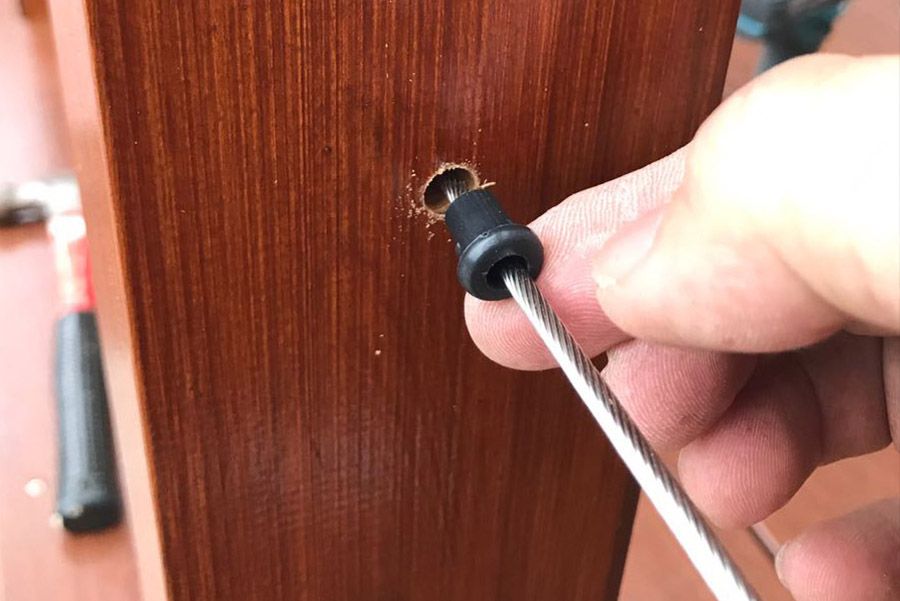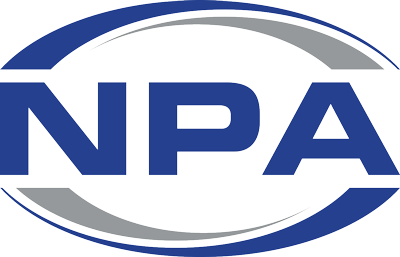
Grommets are small metal, plastic or rubber rings that are used in a variety of industrial applications. They are often used to reinforce and protect holes in materials, such as fabrics, leather, plastic, and metal.
The grommet is usually placed around the edge of the hole to prevent it from tearing or fraying and to protect anything that may be threaded through the hole such as electrical cables.
Grommets can be used for a wide range of industrial purposes. If you're a purchasing manager who is interested in industrial grommets, hopefully this guide will serve as great place to start.
What exactly are grommets used for?
Grommets are used in a wide range of industrial applications. They can be used to reinforce holes in fabrics and leather, such as those used in tents, tarps, and awnings. They can also be used to attach straps to bags, backpacks, and other types of luggage.
Grommets are also used in the manufacturing of electronic equipment, where they are used to route cables through panels or to provide strain relief.
What are the main types of grommets?
There are several different types of grommets, each with its own unique properties and applications. Some of the most common types of grommets include;
- Metal grommets - These grommets are typically made of brass, aluminium, or stainless steel. They are strong and durable and can be used in a wide range of applications.
- Plastic grommets - These grommets are made of various types of plastic, such as nylon or PVC. They are lightweight and inexpensive, and they are often used in applications where corrosion resistance is important.
- Rubber grommets - These grommets are made of rubber and are often used to protect cables and wires from chafing or rubbing against sharp edges.
When should you choose metal grommets?
Metal grommets are a type of fastener used to reinforce holes in fabrics, leather, plastic, or other materials. They offer several advantages over plastic grommets, such as increased strength, durability, and a more premium look.
Here are some situations where metal grommets are particularly useful:
- When you need a stronger, more durable solution for holes that will be subjected to heavy use or stress, such as in a sail, tarpaulin, or industrial equipment cover.
- When you need a more weather-resistant solution for outdoor applications, such as in awnings or boat covers.
- When you want to create a premium or decorative look for the hole, such as in leather belts or bags, high-end clothing, or upholstery.
- When you need a fire-resistant solution for applications such as welding curtains or fire blankets.
When should you choose plastic grommets?
Plastic grommets are a type of fastener used to reinforce holes in fabrics, leather, plastic, or other materials.
They can be used in a variety of applications such as clothing, curtains, tarps, banners, and other types of fabric-based products.
Here are some situations where plastic grommets are particularly useful:
When you need to create a hole in a material that is prone to tearing or fraying, such as canvas or vinyl.
When you want to reinforce a hole that will be subjected to frequent use or stress, such as in a banner or tarpaulin.
When you need a durable, weather-resistant solution for outdoor applications.
When you want to create a clean, finished look for the hole, such as in a leather belt or bag.
Why use rubber grommets?
Rubber grommets are commonly used in industrial applications because of their ability to protect cables and wires from damage caused by chafing or rubbing against sharp edges.
The rubber material also provides a degree of insulation, making it an ideal choice for electrical applications. Additionally, rubber grommets are often used in automotive applications because of their ability to withstand exposure to heat, oil, and other harsh chemicals.
When is it best to use rubber grommets?
Rubber grommets are best used when there is a risk of cables or wires being damaged by sharp edges or rough surfaces.
They are often used in applications where there is a lot of movement or vibration, such as in automotive or machinery applications.
Rubber grommets are also useful in applications where electrical insulation is required, such as in electronic devices or appliances.
Types of rubber grommets
- Blanking Grommets - These are grommets that are used to fill or cover holes in materials or equipment. They are commonly used in automotive applications, such as in engine compartments or body panels, to cover unused or unnecessary holes.
- Blind Centre Grommets - These grommets are used in applications where cables or wires need to be routed through a hole in a panel or surface. The blind center design allows the grommet to be installed from one side of the panel or surface, without the need for access to the other side.
- Cable Grommets - These grommets are used to protect and organize cables or wires as they pass through a hole in a panel or surface. They are commonly used in computer and electronics applications, as well as in automotive and machinery applications.
What format do grommets come in for bulk purchases?
If you're interested in purchasing grommets in bulk, you can typically buy them in strips or sheets. Grommets may come pre-attached to a strip of material, such as fabric or plastic, or they may be sold individually in a bags or boxes.
Summary of key factors to consider when purchasing grommets
When purchasing grommets, there are several factors to consider to ensure you choose the right grommet for your application. These factors include;
- Material: Grommets can be made from a variety of materials, including rubber, plastic, metal, or fabric. The material should be chosen based on the specific application and the environment in which the grommet will be used.
- Size: Grommets come in a range of sizes, and it's important to choose the right size to ensure proper fit and function. Consider the diameter of the hole that the grommet will be inserted into, as well as the diameter of the cable or wire that will pass through the grommet.
- Shape: Grommets come in a range of shapes, including round, oval, and rectangular. The shape should be chosen based on the specific application and the shape of the hole or panel that the grommet will be inserted into.
- Quantity: Consider the number of grommets that you will need for your application. Grommets may be available in bulk quantities and in sheets, which can help to reduce the overall cost.
- Supplier: Choose a reputable supplier or manufacturer to ensure that you receive high-quality grommets that meet your specific requirements. Look for a supplier that offers a wide range of grommet sizes and materials, as well as expert advice, competitive pricing and fast delivery times.
- Application: Consider the specific application for which the grommet will be used, including the environment, the type of cable or wire that will be passing through the grommet, and any other factors that may impact the performance of the grommet. This will help you to choose a grommet that is best suited for your needs
Grommets are a versatile and essential component in many industrial applications. As a purchasing manager, it's important to understand the different types of grommets available and to choose the right size and material for your specific application.
By following the guidelines outlined in this guide, you'll be well-equipped to make informed decisions when purchasing industrial grommets.
If you have any further questions regarding grommet applications, sizes or quantities, please don’t hesitate to call our experts at NPA on (08) 8268 2733 or click here to view our range available for sale online.

